This unit standard is intended for managers in all economic sectors.
This unit standard is intended for managers in all economic sectors. These managers would typically be second-level managers such as heads of department, section heads or divisional heads, who may have more than one team reporting to them. The qualifying learner is capable of demonstrating knowledge and understanding of diversity in the workplace. Demonstrating understanding of the reality of diversity and its value in a unit. Managing team members takes into account similarities and differences. Dealing with disagreements and conflicts arising from diversity in a unit.
Course Content
- Definition of key terms.
- Definition of diversity
- 2.1 Multiple generations, multiple work skills and styles.
- Diversity as a potential source of discrimination.
- The implications of diversity for external and internal relationships.
- (cont’d) A 4. (cont’d) C
- (incl. 1.5.1) Cultural biases, stereotypes and perceptions and their influence on diversity.
- Suggestions to facilitate cross-cultural communication.
- Be aware of your own potential biases and prejudices.
- Perception and diversity.
- (incl. 1.5.6) Persons perception and workforce diversity.
- Embracing a diverse gender workplace.
- Introduction.
- (cont’d) Benefits of diversity in employees and clients for an organisation
- Ways of utilising the diverse talents, attitudes, and values of employees.
- Components of attitudes.
- (incl. 2.2.3) Perspectives.
- Reflection of the community.
- Ways of meeting the diverse needs of employees.
- Ways of meeting the diverse needs of clients with a range of products and services.
- (cont’d) Reflection.
- (cont’d) Examples.
- Encouraging diverse viewpoints in meetings.
- (incl. 3.1) Introduction.
- ools for managers to overcome communication barriers.
- Creation of mutual respect and trust.
- Common beliefs, values, interests, and attitudes that will serve as a basis for leading the team.
- Encouraging the expression of diverse viewpoints.
- Sensitivity towards and understanding of diversity.
- Introduction.
- Recognising and dealing with all incidents of conflict and disagreement.
- Using disagreements and conflict as opportunities for learning.
- Identifying and managing all cases of discrimination and discriminatory practices.
- Non-accredited: Short course only
- Duration: 1h 30m
- Delivery: Classroom/Online/Blended
- Access Period: 12 Months


